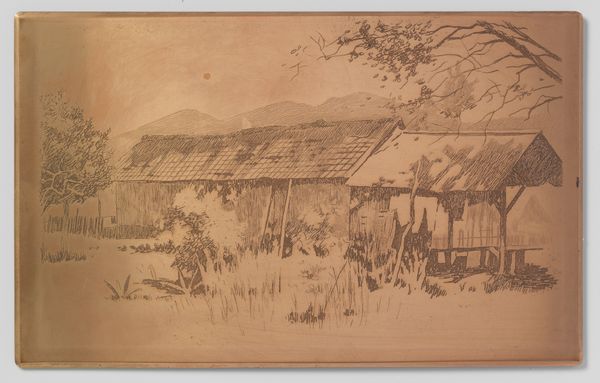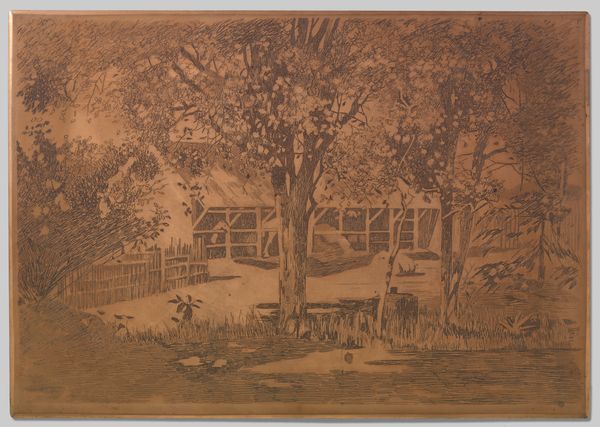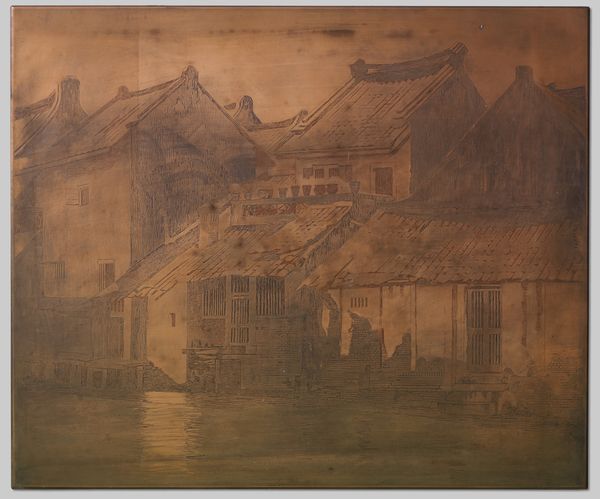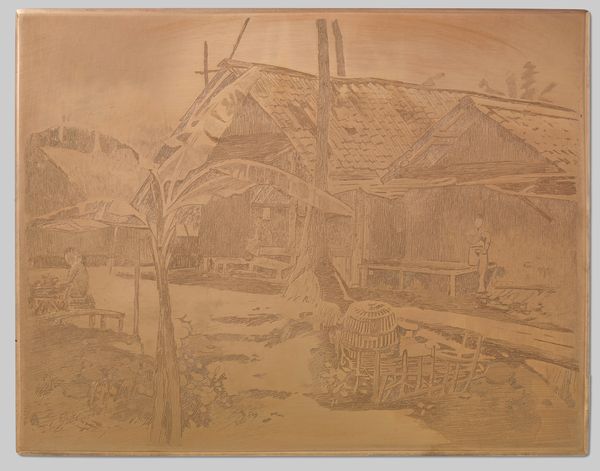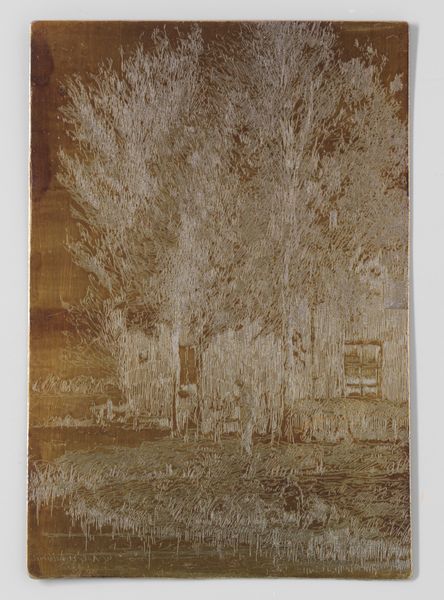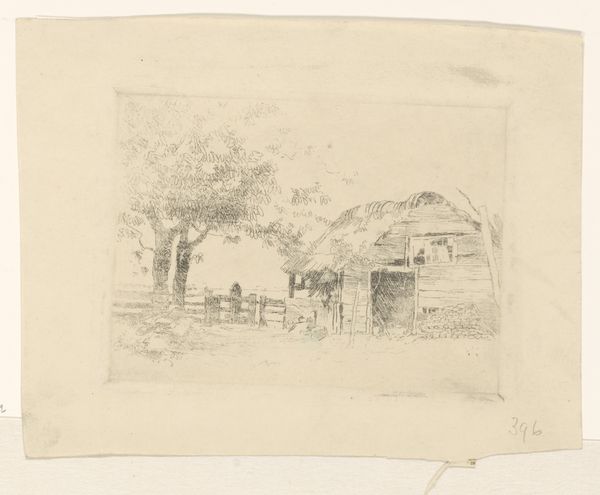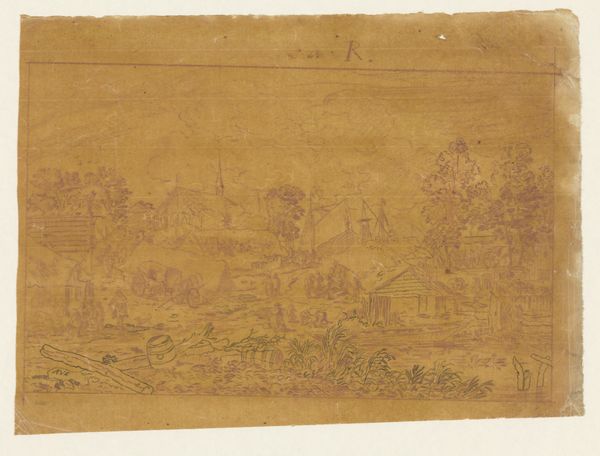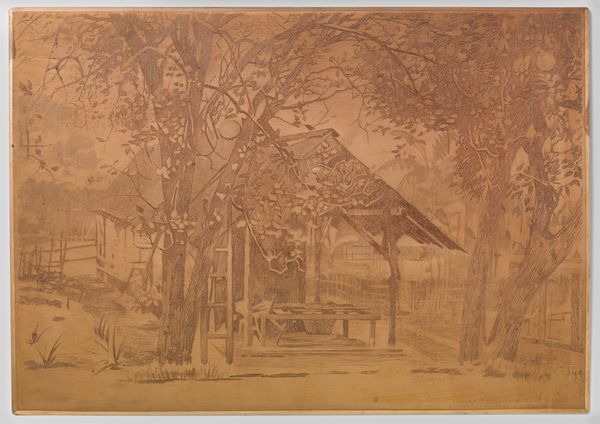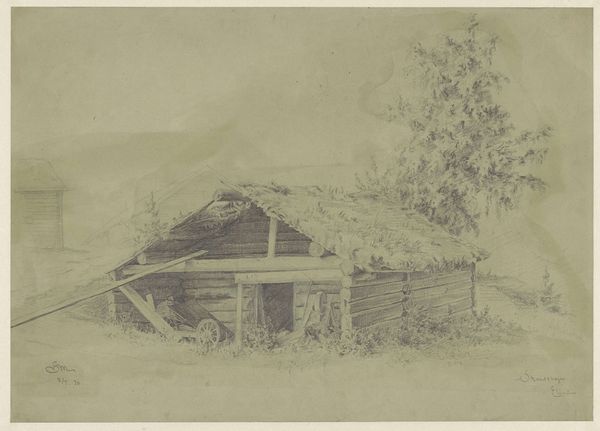
print, engraving
#
ink painting
# print
#
landscape
#
orientalism
#
engraving
Dimensions: height 399 mm, width 502 mm
Copyright: Rijks Museum: Open Domain
Curator: Here at the Rijksmuseum we have a print titled, "Buitenzorg, huis met vulkaan op de achtergrond," which roughly translates to “Buitenzorg, house with volcano in the background.” It was created by Willem Witsen around 1921, employing engraving and ink painting techniques. Editor: The monochromatic copper-brown immediately gives it a vintage aura. I find myself drawn to the quietude, yet the landscape feels incredibly dense, almost suffocating. Curator: That density reflects the period’s orientalist fascination. Witsen wasn't just depicting a landscape; he was constructing an image of colonial Indonesia for a European audience, laden with their preconceived notions. Editor: You can really see the craft here. The textures achieved through engraving capture the lushness, the raw materiality of the land, but it is a specific type of capturing, aimed to display. Curator: Right. Buitenzorg, now Bogor, was the residence of the Governor-General. Images like this served to visually reinforce the colonial power structure, positioning the Dutch presence amidst the exotic. Editor: It’s interesting to consider how the process of printmaking mirrors colonial exploitation – a matrix pressed repeatedly, extracting resources in a sense to disseminate an image. The volcano looms faintly in the background and perhaps offers a subtle commentary on the unpredictable nature of imperial endeavors. Curator: Perhaps, or maybe Witsen just sought to romanticize. Either way, this image’s journey from conception to display underscores the complex web of artistic creation intertwined with political undertones. Editor: Thinking about how this was reproduced also shapes how we think about its value and who had access to these kinds of depictions. Curator: Precisely. These prints circulated widely, informing public perception and justifying, on a subconscious level, the ongoing colonial project. Thank you for your perspective. Editor: My pleasure. Examining the raw materials alongside the cultural motivations offers such insight.
Comments
No comments
Be the first to comment and join the conversation on the ultimate creative platform.

